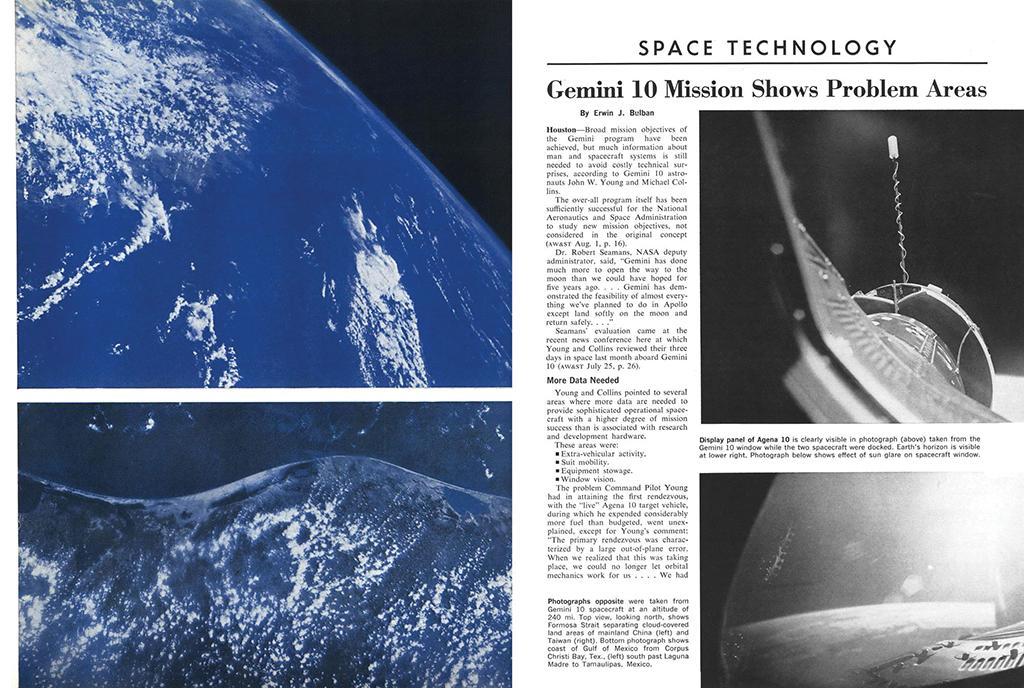
In 1966, as the pilot of the Gemini 10 mission, Collins became the 17th American to fly in space. “Broad mission objectives of the Gemini program have been achieved, but much information about man and spacecraft systems is still needed to avoid costly technical surprises, according to Gemini 10 astronauts John W. Young and Michael Collins,” Aviation Week reported.
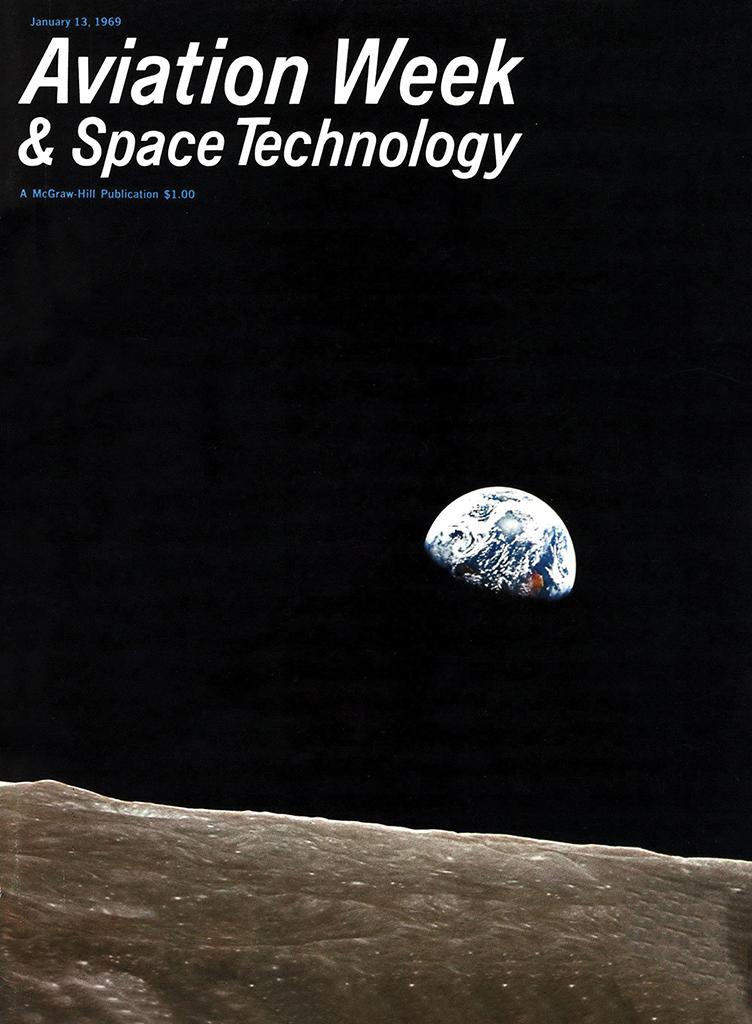
In December, 1968, Collins served as the Capcom—the astronaut on Earth who communicates with crews in space—for Apollo 8, which orbited the Moon.
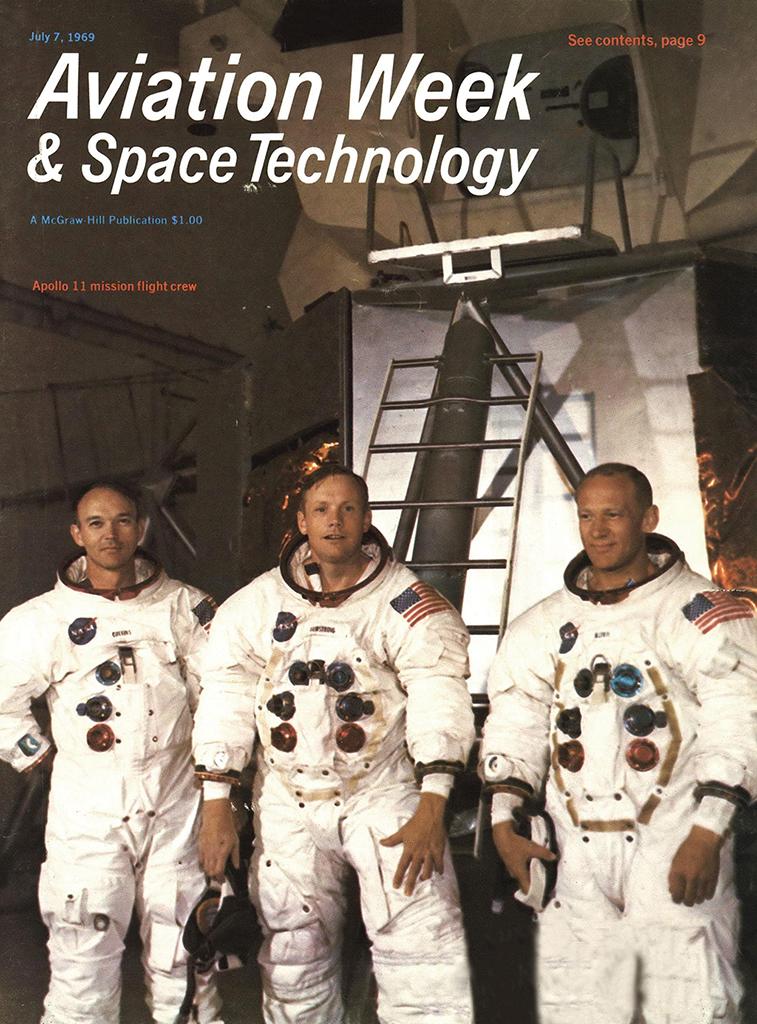
Apollo 11 crew at lunar landing mission practice are, left to right, Michael Collins, command module pilot; Neil A. Armstrong, commander; and Edwin E. Aldrin, Jr., lunar module pilot. Behind them at Kennedy Space Center is the lunar module mockup used for mission training.

Astronaut Michael Collins, alone in the lunar orbiting command/service module of Apollo 11, took this dramatic photo of the lunar module as it was making its approach for docking. The view is looking west along the Moon’s equator, with Earth clearly visible off the Moon’s horizon. The large dark area beyond the lunar module is Smyth’s Sea on the Moon’s nearside.
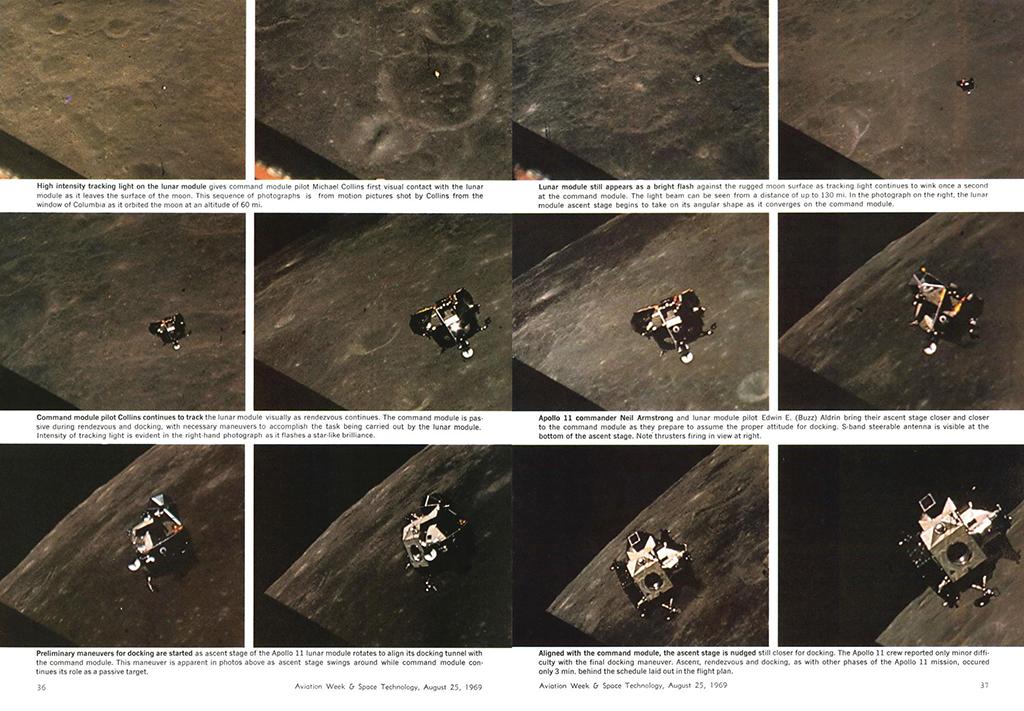
“The Moon changes character as the angle of sunlight striking its surface changes. At very low sun angles close to the terminator at dawn or at dusk, it has the harsh, forbidding characteristics which you see in a lot of photographs. On the other hand, when the Sun is more closely overhead—the midday situation—the Moon takes on more of a brown color. . . . It becomes almost a rosy-looking place, a fairly friendly place so that from dawn through midday through dusk you run the whole gamut.”
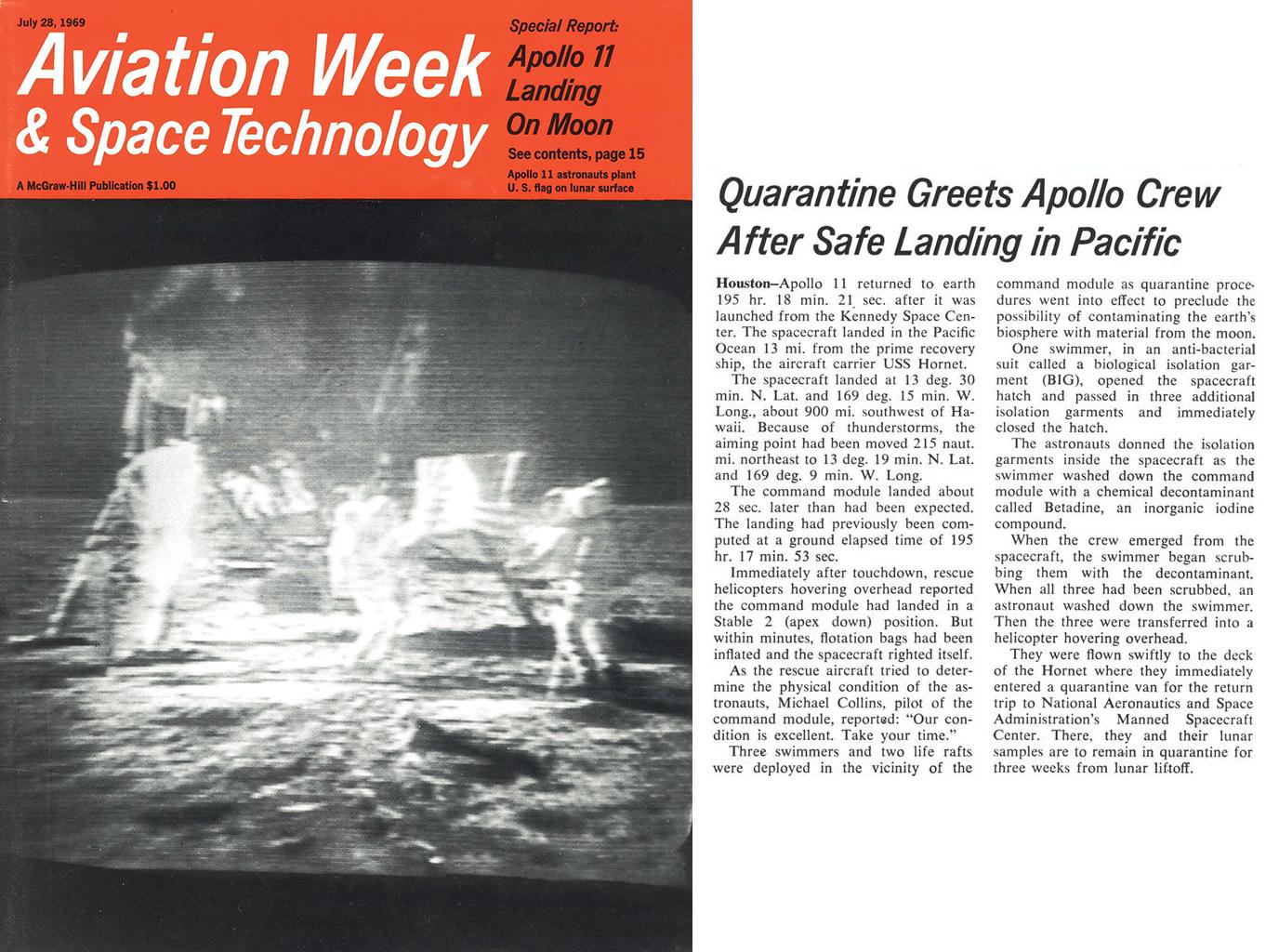
Apollo 11 returned to Earth 195 hr. 18 min. and 21 sec. after it was launched from the Kennedy Space Center. The spacecraft landed in the Pacific Ocean 13 mi. from the prime recovery ship, the aircraft carrier USS Hornet. . . . As the rescue aircraft tried to determine the physical condition of the astronauts, Michael Collins, pilot of the command module, reported: “Our condition is excellent. Take your time.”

Collins lobbied for funding to build the Smithsonian’s National Air and Space Museum and served as its first director. “We hope this museum will be a window on the [Washington] Mall where the lay American public can come to understand what we in aerospace do,” he said at its opening in 1976.

President Barack Obama on July 20, 2009, with Apollo 11 crew (from left) Lunar Module Pilot Buzz Aldrin, Command Module Pilot Michael Collins and Commander Neil Armstrong.
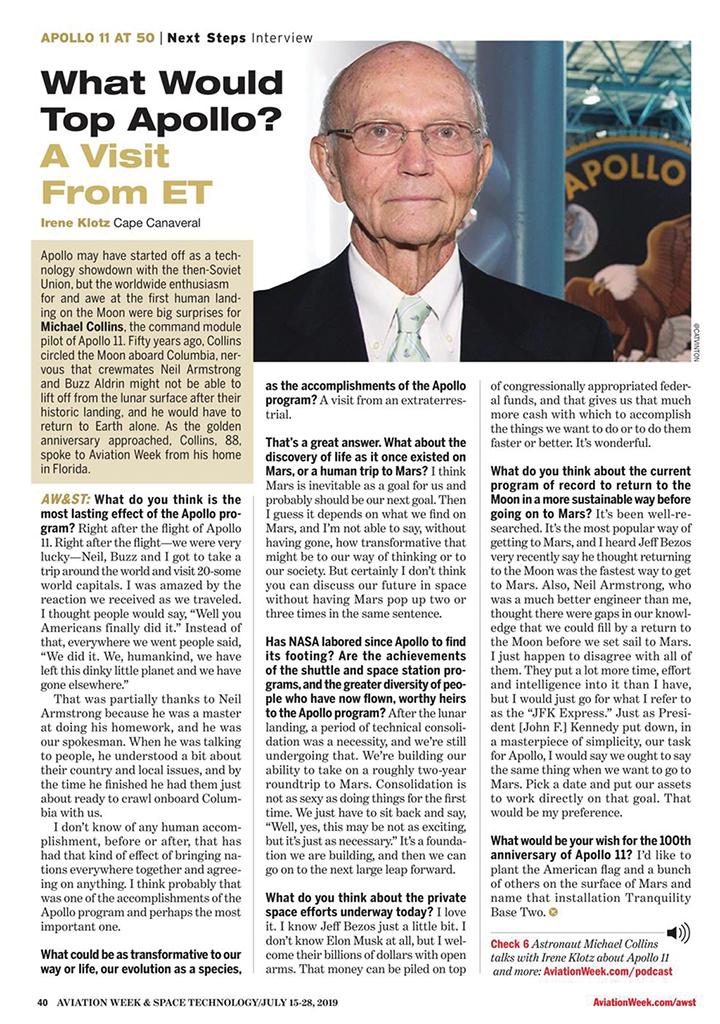
For the 50th anniversary of the Apollo 11 mission in 2019, “Just as President Kennedy put down, in a masterpiece of simplicity, our task for Apollo, I would say we ought to say the same thing when we want to go to Mars,” he said. “Pick a date and put our assets to work directly on that goal.”
Astronaut Michael Collins has appeared many times in Aviation Week since he piloted the Gemini 10 mission in 1966 and orbited the Moon in Apollo 11’s command module as Neil Armstrong and Edwin “Buzz” Aldrin landed on the lunar surface in 1969. Here is a look at some high points in his career.

Comments